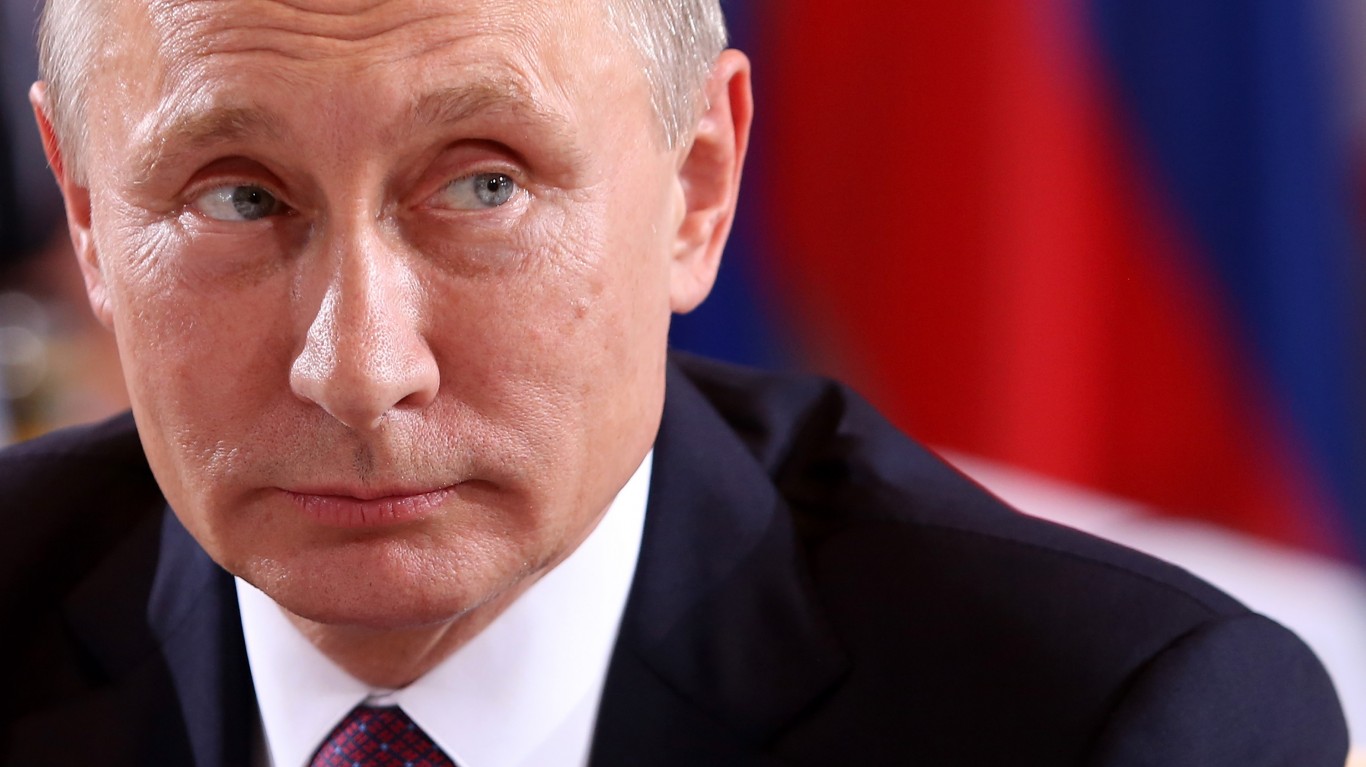
Russian President Vladimir Putin said last week that the Russian military would “respond accordingly” if the United Kingdom were to provide Ukraine with depleted uranium ammunition. This is not the first time Putin has threatened to use “weapons with a nuclear component” and there are some who fear he might even consider using one or more of Russia’s world-leading 5,977 nuclear bombs on Ukraine or one of its NATO member neighbors. (These are the nine countries with nuclear weapons, ranked.)
Vladimir Putin is one of nine global leaders with a nuclear arsenal, capable of destroying life on earth as we know it. Using data from the 2022 Status of World Nuclear Forces, a report by the nonprofit global policy think tank Federation of American Scientists, 24/7 Wall St. identified the nine people who lead the world’s nuclear-armed states.
Nuclear weapons are considered – both by countries pursuing them and those possessing them – as a deterrent to would-be aggressors. The Cold War between the Soviet Union and the United States would not likely have remained cold had it not been for mutual assured destruction – a defense principle warning that a nuclear strike by one power would be met with a devastating counterattack by the other and result in the annihilation of both belligerents. (This is what a nuclear attack would do to the world’s major cities.)
A nuclear explosion can drive ground temperatures up to over 7,000 degrees Fahrenheit and create destructive shockwaves, potentially killing millions in densely-populated cities. But the devastation can also extend far beyond the immediate blast radius. Multiple nuclear explosions, should any one of the countries on this list engage in a nuclear war, could send millions of tons of black smoke into the stratosphere, reducing sunlight and lowering global temperatures, resulting in lower crop yields and mass famine, to name but a few of the consequences. (This is what a nuclear winter would do to the Earth.)
The nuclear arsenals of today are far more advanced – and destructive – than those of the previous century. Nuclear weapons can now be deployed from the sea, land, and air, and they range greatly in power. Russia, for example, is known to have tactical nuclear weapons, which are generally smaller and designed to be used on the battlefield. Russia has also successfully tested a hydrogen bomb with a 50 megaton payload – a force over 1,500 larger than the bombs used in Hiroshima and Nagasaki and equal to more than 10 times all the munitions used throughout World War II.
Click here to see the nine leaders who have the power to destroy life on Earth.





